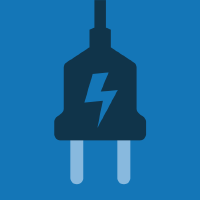Topic Editors





High Voltage Engineering
Topic Information
Dear Colleagues,
High-voltage engineering has become a crucial part of our modern society, from the different components in the power system grid to the copy machines around us. Recently, different challenges have emerged in high-voltage engineering that need special attention from researchers.
For example, with the increased use of high-voltage direct current (HVDC) systems, the design of power equipment and hardware such as power transformers, outdoor insulators, and underground cable insulation needs careful investigation along with the testing parameters to represent the new stress conditions. Another area in high-voltage engineering is the emergence of a new class of materials called “nanodielectrics” that show great potential for use in both solid and liquid insulation systems. Moreover, with the increasing number of aged assets in power systems, there is a need for smart, efficient, and cost-effective condition monitoring techniques. This involves the use of new sensors, advanced signal processing, machine and deep learning algorithms, and new inspection tools such as robots and drones. Additionally, the industrial applications of high voltage are widespread, such as electrostatic precipitators, electrostatic paining, and pulse power application.
This Special topic aims to encourage researchers to address these important issues and other challenges in high-voltage engineering.
Dr. Ayman El-Hag
Prof. Dr. Issouf Fofana
Prof. Dr. Behzad Kordi
Dr. Refat Ghunem
Dr. Ali Naderian
Topic Editors
Keywords
- solid, liquid and gas dielectric materials
- nanodielectric materials
- high-voltage testing and measurement
- condition monitoring and diagnostics
- application of machine and deep learning
- high-voltage industrial applications
Participating Journals
| Journal Name | Impact Factor | CiteScore | Launched Year | First Decision (median) | APC | |
|---|---|---|---|---|---|---|

Electricity
|
- | - | 2020 | 20.3 Days | CHF 1000 | Submit |

Electronics
|
2.9 | 4.7 | 2012 | 15.6 Days | CHF 2400 | Submit |

Energies
|
3.2 | 5.5 | 2008 | 16.1 Days | CHF 2600 | Submit |

Materials
|
3.4 | 5.2 | 2008 | 13.9 Days | CHF 2600 | Submit |

Sustainability
|
3.9 | 5.8 | 2009 | 18.8 Days | CHF 2400 | Submit |

MDPI Topics is cooperating with Preprints.org and has built a direct connection between MDPI journals and Preprints.org. Authors are encouraged to enjoy the benefits by posting a preprint at Preprints.org prior to publication:
- Immediately share your ideas ahead of publication and establish your research priority;
- Protect your idea from being stolen with this time-stamped preprint article;
- Enhance the exposure and impact of your research;
- Receive feedback from your peers in advance;
- Have it indexed in Web of Science (Preprint Citation Index), Google Scholar, Crossref, SHARE, PrePubMed, Scilit and Europe PMC.

